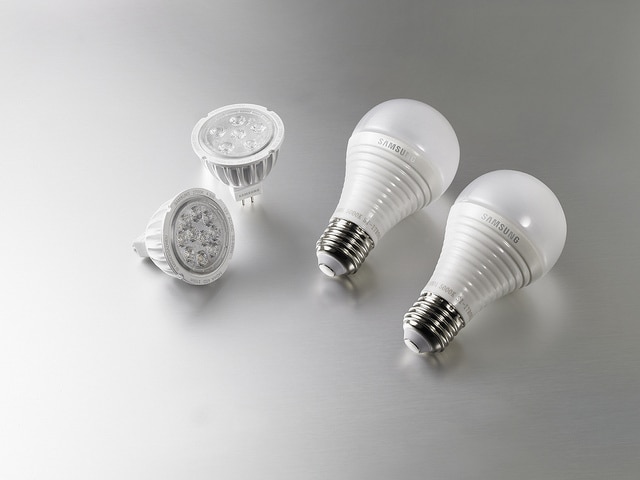It is getting harder to find any type of lighting that isn’t one of the 3 most common energy efficient lighting types, mostly because the traditional incandescent light isn’t made by many manufacturers anymore. The choices that remain will provide a wider range of lighting options, increased energy efficiency and reduced waste. Knowing which light to choose for your home or office will make sure that you get right one to help you work or live. These energy efficient lighting types light your home using the same amount of light for less money.
What Happened to the Traditional Incandescent Light?
The regulations guiding lights changed to promote the use of common energy-efficient lighting types as it became more recognized that the traditional incandescent used almost 90% more energy, and created a problem in the landfills. At first, people were resistant to the change claiming that the lighting provided by the new styles was inadequate, but the reality was the light from the traditional incandescent wasn’t really the best. The new energy-efficient lighting types present a spectrum of lighting that suits better vision and health in the home or office. Traditional incandescent bulbs are no longer manufactured as they consume lot of energy to produce light.
What are my Lighting Choices Now?
The three most common energy-efficient lighting types are Halogen Incandescent Lights, Compact Fluorescent Lamps (CFL), and Light Emitting Diodes (LED). Each of them comes in a variety of wattage power, light spectrum color, and size. Which one you choose will depend on several factors.
Halogen Incandescent Lights
While mostly associated with offices, halogen incandescent lights are starting to appear more and more in homes. Halogen incandescent lights have a capsule inside that holds gas around a filament to increase its efficiency. The cost of halogen lighting has come down significantly over the past decade, and there is a larger range of styles of bulbs and colors too. Halogen creates a more focused “clean” spectrum of light that can help to relieve vision strain.
Compact Fluorescent Lamps (CFL)
CFL bulbs are what you will generally find on the store shelves today. They are shaped in the same size and style as the traditional incandescent, but the bulb itself almost looks like a soft ice cream twist. This was an ingenious way to take the power and capacity of the traditional long tube fluorescent light and adapt it to be able to fit house lighting designed to support the traditional incandescent. There is a broad spectrum of light available in these lamps.
One thing that they are becoming known for is that while their cost has come down significantly, they are still more expensive than the traditional incandescent – but they also last 14 times longer. Replacing the old style bulb with the new CFL is as simple as just using the CFL in place of the traditional lamp.
Compared to incandescent lamp, an Energy Star CFL’s use 1/5 or 1/3 of electric power and last eight to fifteen times longer. CFL’s cost more than an incandescent lamp but can save you five times over its purchase price in electricity costs over the lamp’s lifetime. A CFL uses about one-third the energy of a halogen incandescent.
Light Emitting Diodes (LED)
LED’s in white light hold the greatest potential for the future of all the common lighting types as they are one of today’s most energy efficient and rapidly growing technologies. LED’s get illuminated by the movement of electrons in the semiconductor. They are tiny little bulbs that easily fit into an electrical circuit. They perform variety of jobs and can be found in many different devices. For instance, they transmit information from remote controls, illuminate traffic lights, form numbers on digital clocks, lights up watches and many others. It is one of the most energy efficient types, with a lifespan that can last more than 50 times the CFL.
LED’s with Energy Star rating use 20-25% of the energy and last 20-25 times longer than traditional incandescent bulbs. LED bulbs and lights cost more initially but that cost can be recovered at a later stage as they consume less energy and last a long time. LED bulbs are becoming less expensive as various technology innovations are being discovered that all more of the individual LED’s to be grouped cheaply to provide efficient light.
Picking Lighting Type for Your Home or Office
Switching to one of the common energy efficient lighting types is easier, and more affordable than ever. The latest generations of lamp design allow CFL bulbs to be used interchangeably with traditional lamps in most cases, and you can even retrofit the old style fluorescent tube light box with sockets for bulb CFLs easily. Halogens and LEDs still use different lamps, but their cost has dropped significantly too. What you really should be looking for is the quality of light you need to know what lamp to choose. There are charts that will show you which spectrum of light and wattage you need to do certain activities to help you save energy, and keep your eyes from straining.
While just switching your bulbs over to one of the most common energy efficient lighting types will significantly reduce the amount of energy you consume, it isn’t the only thing you should be doing to conserve energy. Practicing good energy habits is essential to saving money, and saving energy.
- Turn off lights when they are not in use.
- Only use the lights you need.
- Keep the bulbs free of dust and grime.
- Use energy efficient lamps.
The more you can do to change how you consume electricity, the better we all will be in the long run.






